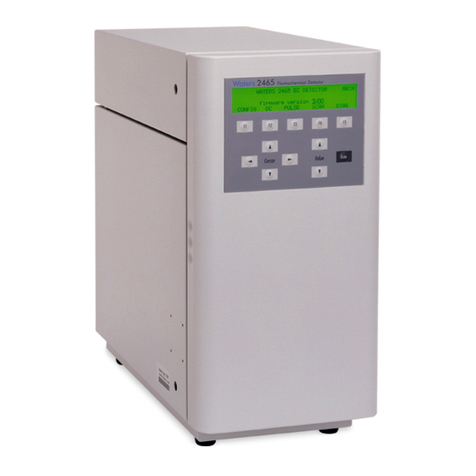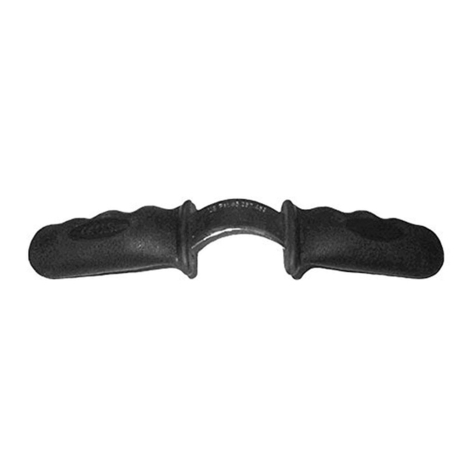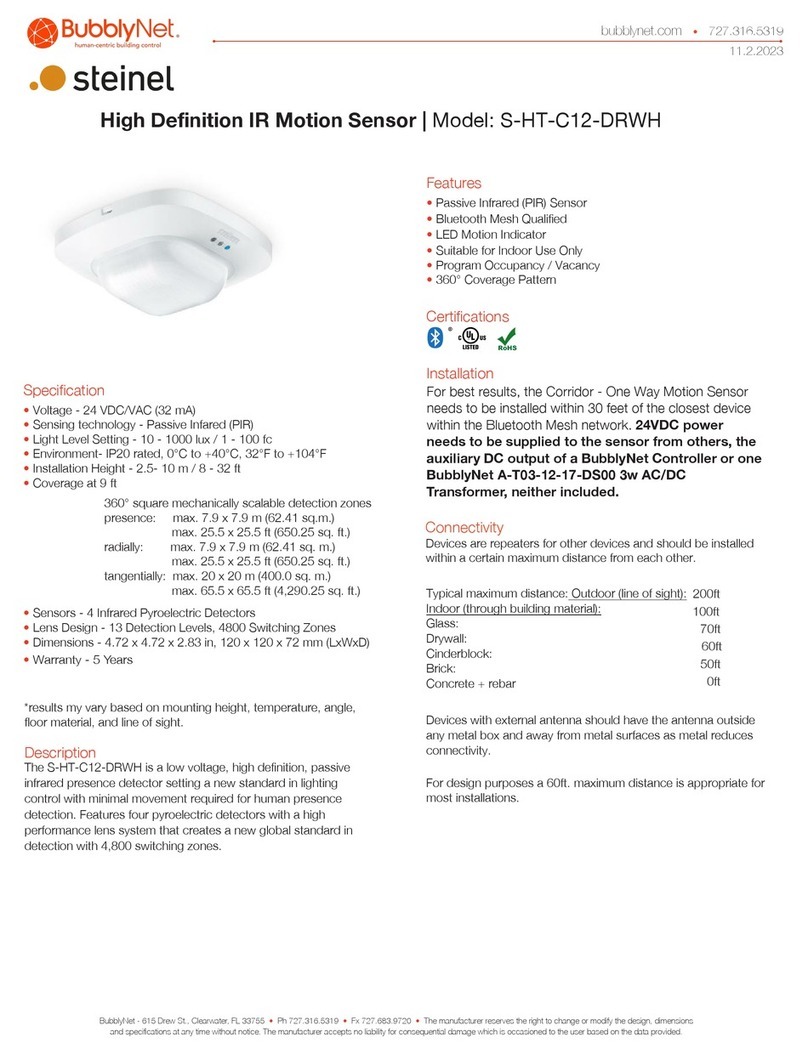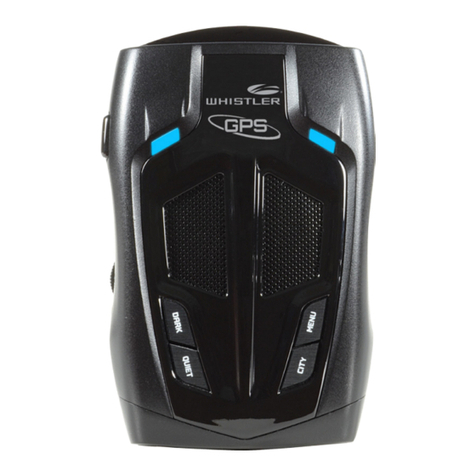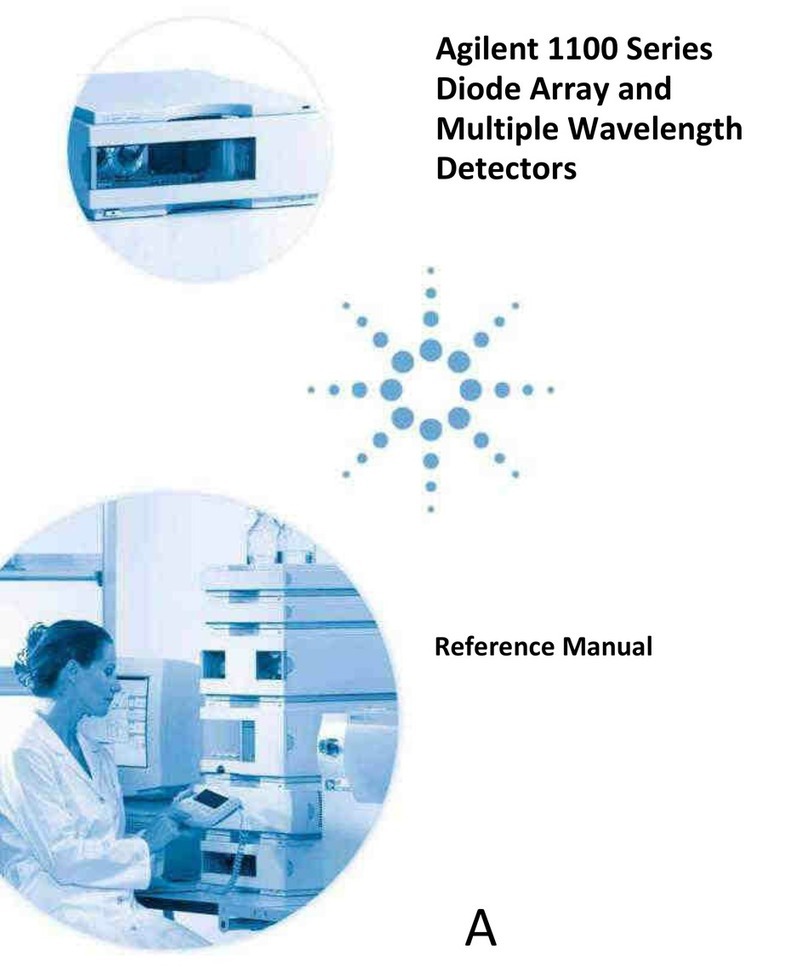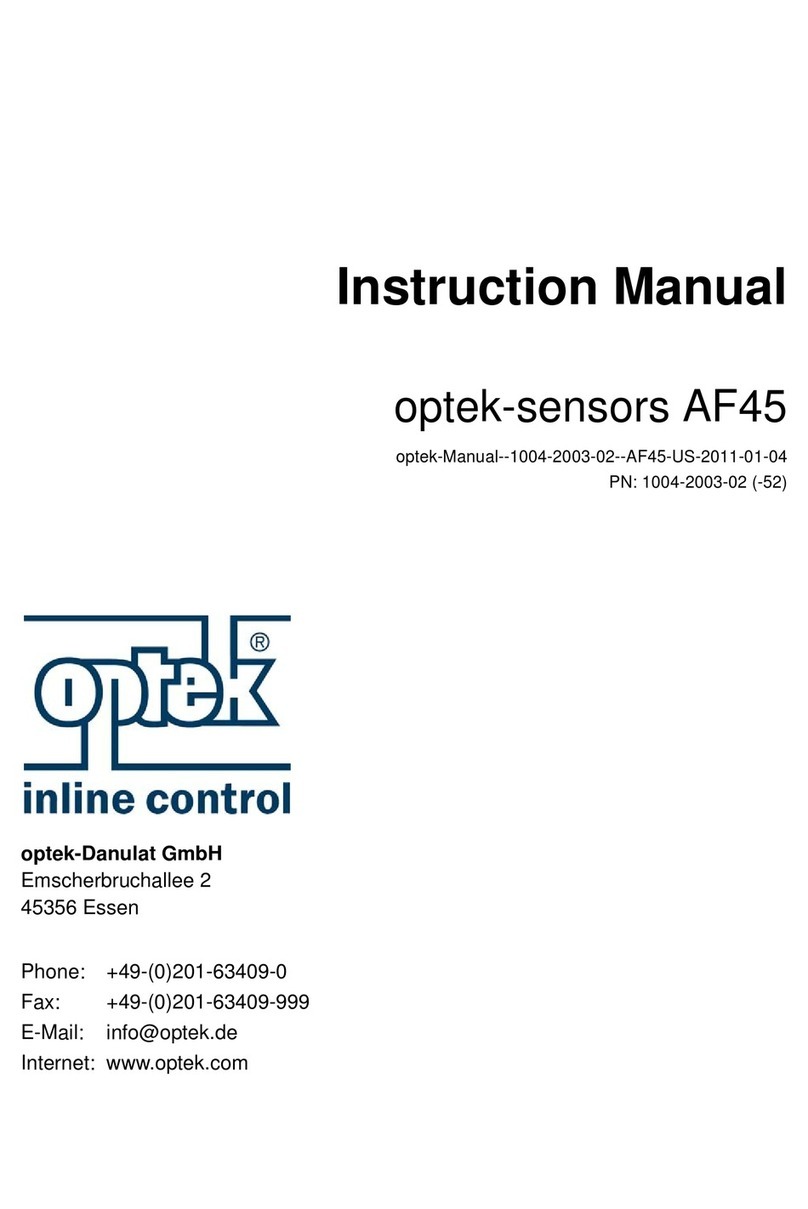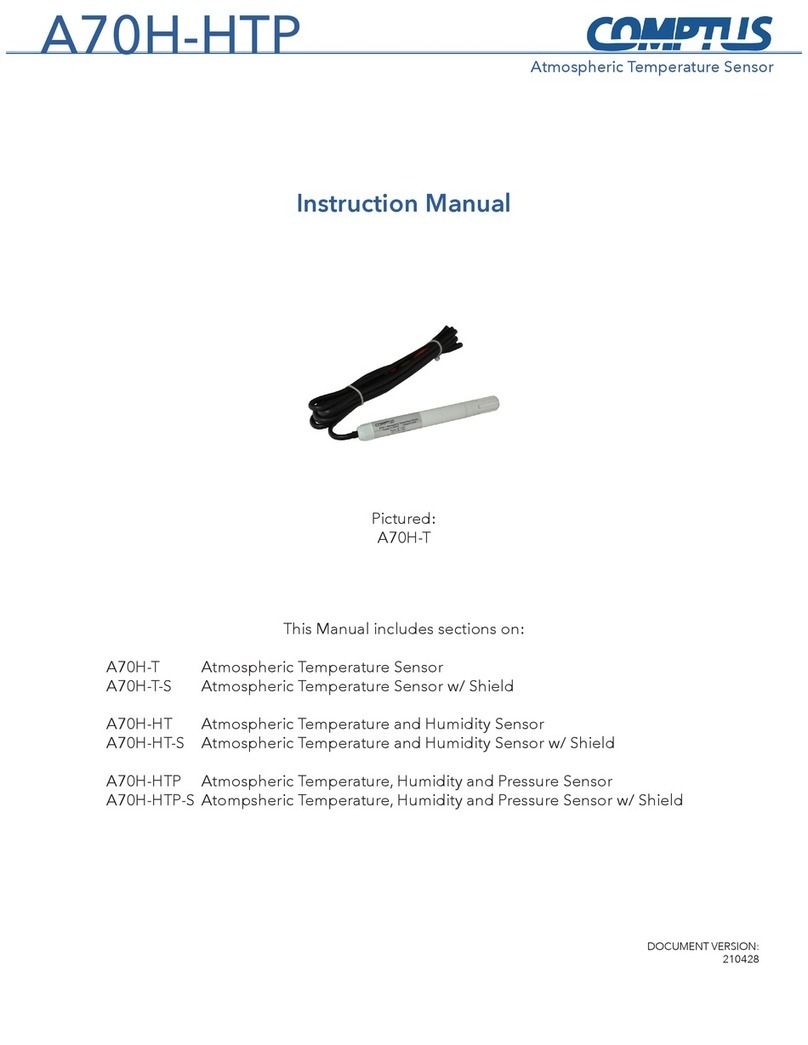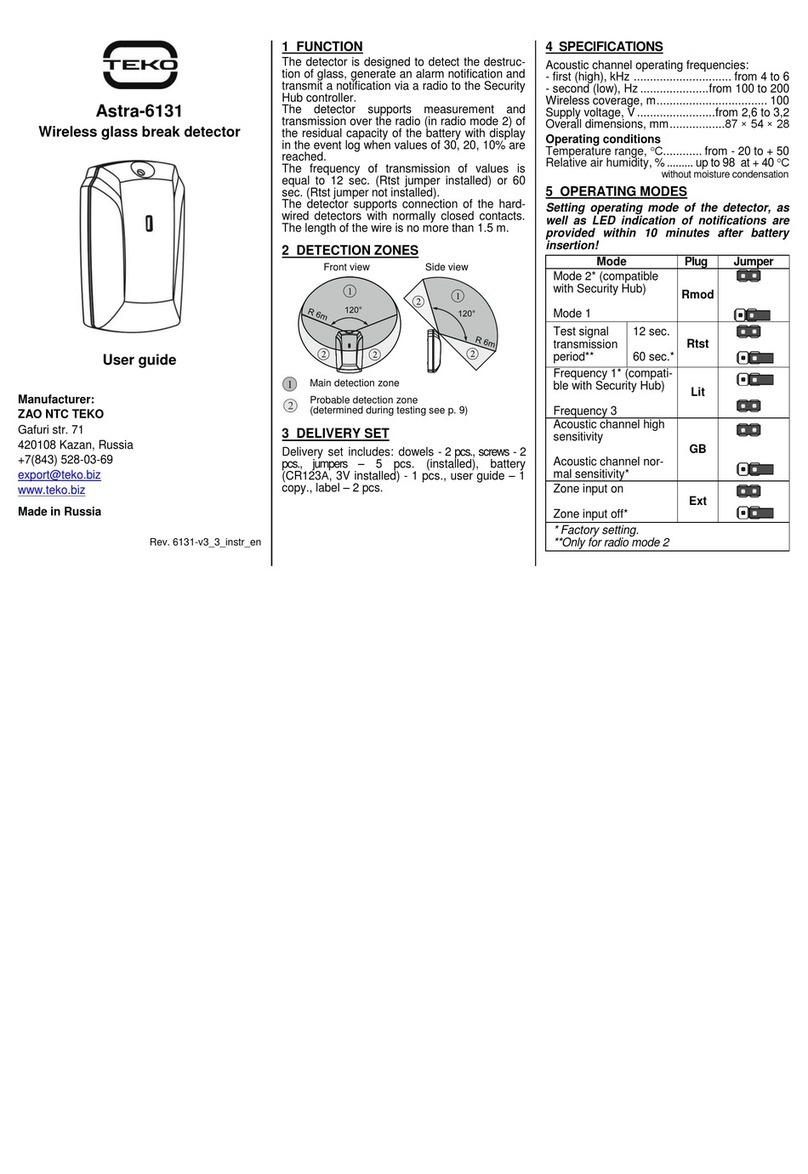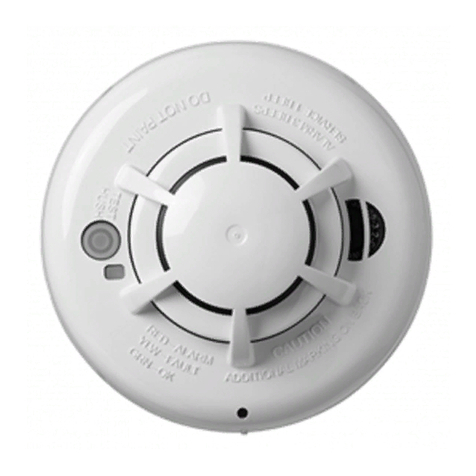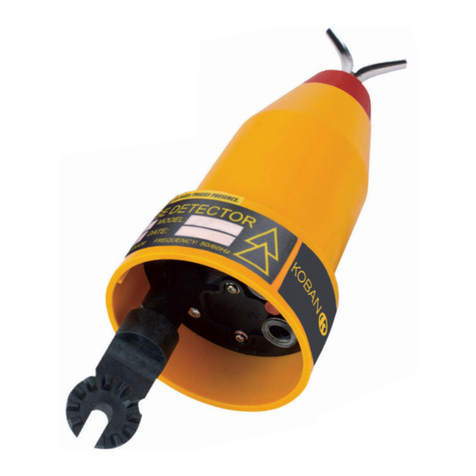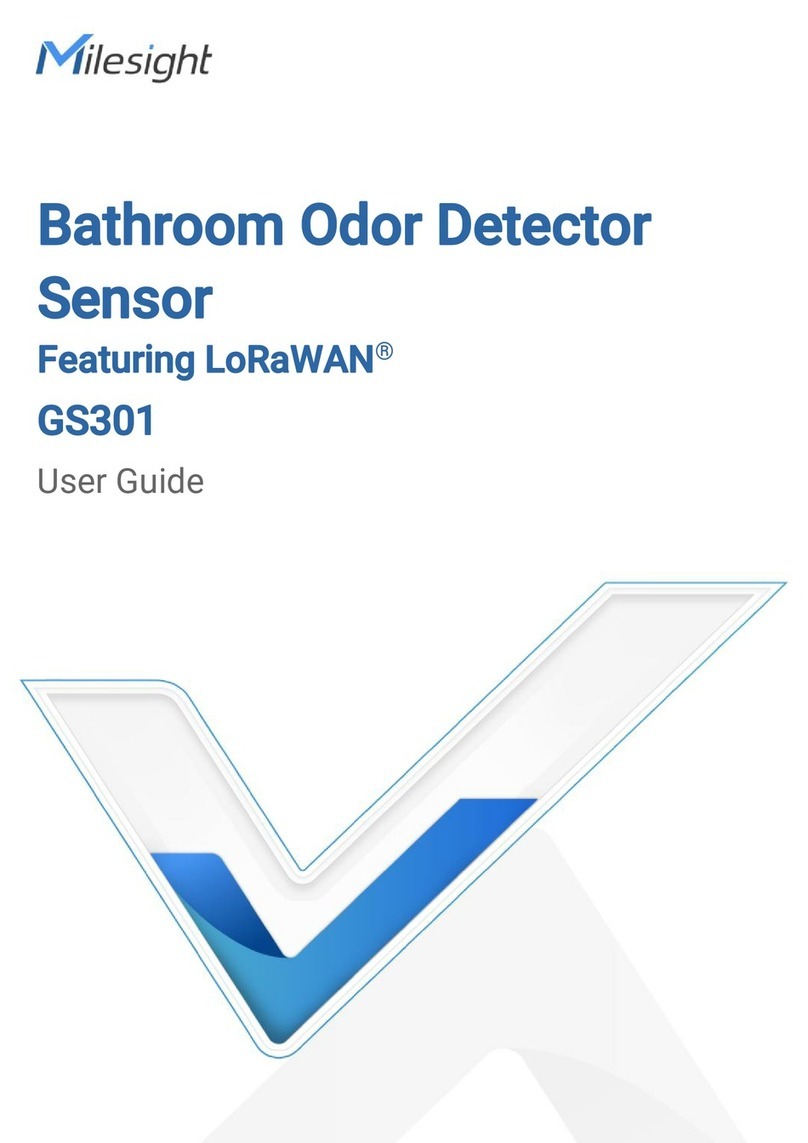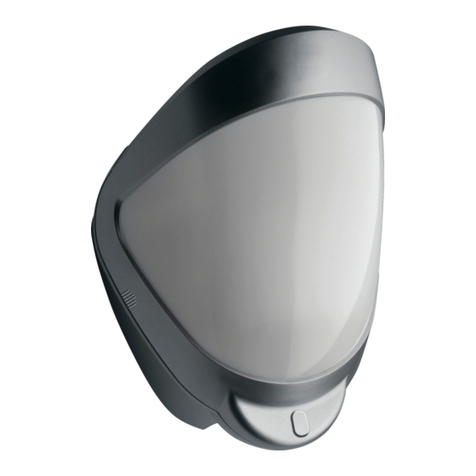Waters 2996 Manual

Waters 2996
PDA Detector
Operator’s Guide
34 Maple Stre
et
Milford, MA 0175
7
71500023202, Revision
C

NOTICE
The information in this document is subject to change without notice and should not be
construed as a commitment by Waters Corporation. Waters Corporation assumes no
responsibility for any errors that may appear in this document. This document is believed
to be complete and accurate at the time of publication. In no event shall Waters
Corporation be liable for incidental or consequential damages in connection with, or
arising from, the use of this document.
© 2001 WATERS CORPORATION. PRINTED IN THE UNITED STATES OF
AMERICA. ALL RIGHTS RESERVED. THIS DOCUMENT OR PARTS THEREOF
MAY NOT BE REPRODUCED IN ANY FORM WITHOUT THE WRITTEN
PERMISSION OF THE PUBLISHER.
Millennium, PIC, and Waters are registered trademarks, and busLAC/E and PowerStation
are trademarks of Waters Corporation.
Micromass is a registered trademark, and MassLynx is a trademark of Micromass Ltd.
All other trademarks or registered trademarks are the sole property of their respective
owners.

Note: When you use the instrument, follow generally accepted procedures for quality
control and methods development.
If you observe a change in the retention of a particular compound, in the resolution
between two compounds, or in peak shape, immediately determine the reason for the
changes. Until you determine the cause of a change, do not rely on the separation results.
Note: The Installation Category (Overvoltage Category) for this instrument is Level II. The
Level II Category pertains to equipment that receives its electrical power from a local level,
such as an electrical wall outlet.
STOP Attention: Changes or modifications to this unit not expressly approved by the party
responsible for compliance could void the user’s authority to operate the equipment.
Important : Toute modification sur cette unité n’ayant pas été expressément approuvée
par l’autorité responsable de la conformité à la réglementation peut annuler le droit de
l’utilisateur à exploiter l’équipement.
Achtung: Jedwede Änderungen oder Modifikationen an dem Gerät ohne die
ausdrückliche Genehmigung der für die ordnungsgemäße Funktionstüchtigkeit
verantwortlichen Personen kann zum Entzug der Bedienungsbefugnis des Systems
führen.
Avvertenza: eventuali modifiche o alterazioni apportate a questa unità e non
espressamente approvate da un ente responsabile per la conformità annulleranno
l’autorità dell’utente ad operare l’apparecchiatura.
Atención: cualquier cambio o modificación realizado a esta unidad que no haya sido
expresamente aprobado por la parte responsable del cumplimiento puede anular la
autorización de la que goza el usuario para utilizar el equipo.

Caution: Use caution when working with any polymer tubing under pressure:
• Always wear eye protection when near pressurized polymer tubing.
• Extinguish all nearby flames.
• Do not use Tefzel tubing that has been severely stressed or kinked.
• Do not use Tefzel tubing with tetrahydrofuran (THF) or concentrated nitric
or sulfuric acids.
• Be aware that methylene chloride and dimethyl sulfoxide cause Tefzel
tubing to swell, which greatly reduces the rupture pressure of the tubing.
Attention : soyez très prudent en travaillant avec des tuyaux de polymères sous
pression :
• Portez toujours des lunettes de protection quand vous vous trouvez à
proximité de tuyaux de polymères.
• Eteignez toutes les flammes se trouvant à proximité.
• N'utilisez pas de tuyau de Tefzel fortement abîmé ou déformé.
• N'utilisez pas de tuyau de Tefzel avec de l'acide sulfurique ou nitrique, ou
du tétrahydrofurane (THT).
• Sachez que le chlorure de méthylène et le sulfoxyde de diméthyle
peuvent provoquer le gonflement des tuyaux de Tefzel, diminuant ainsi
fortement leur pression de rupture.
Vorsicht: Bei der Arbeit mit Polymerschläuchen unter Druck ist besondere Vorsicht
angebracht:
• In der Nähe von unter Druck stehenden Polymerschläuchen stets
Schutzbrille tragen.
• Alle offenen Flammen in der Nähe löschen.
• Keine Tefzel-Schläuche verwenden, die stark geknickt oder
überbeansprucht sind.
• Tefzel-Schläuche nicht für Tetrahydrofuran (THF) oder konzentrierte
Salpeter- oder Schwefelsäure verwenden.
• Durch Methylenchlorid und Dimethylsulfoxid können Tefzel-Schläuche
quellen; dadurch wird der Berstdruck des Schlauches erheblich
reduziert.

Precauzione: prestare attenzione durante le operazioni con i tubi di polimero sotto
pressione:
• Indossare sempre occhiali da lavoro protettivi nei pressi di tubi di
polimero pressurizzati.
• Estinguere ogni fonte di ignizione circostante.
• Non utilizzare tubi Tefzel soggetti a sollecitazioni eccessive o incurvati.
• Non utilizzare tubi Tefzel contenenti tetraidrofurano (THF) o acido
solforico o nitrico concentrato.
• Tenere presente che il cloruro di metilene e il dimetilsolfossido
provocano rigonfiamento nei tubi Tefzel, che riducono notevolmente il
limite di pressione di rottura dei tubi stessi.
Advertencia: manipular con precaución los tubos de polimero bajo presión:
• Protegerse siempre los ojos a proximidad de tubos de polimero bajo
presión.
• Apagar todas las llamas que estén a proximidad.
• No utilizar tubos Tefzel que hayan sufrido tensiones extremas o hayan
sido doblados.
• No utilizar tubos Tefzel con tetrahidrofurano o ácidos nítrico o sulfúrico
concentrados.
• No olvidar que el cloruro de metileno y el óxido de azufre dimetilo inflan
los tubos Tefzel lo que reduce en gran medida la presión de ruptura de
los tubos.

Caution: The user shall be made aware that if the equipment is used in a manner not
specified by the manufacturer, the protection provided by the equipment may be impaired.
Attention : L’utilisateur doit être informé que si le matériel est utilisé d’une façon non
spécifiée par le fabricant, la protection assurée par le matériel risque d’être défectueuses.
Vorsicht: Der Benutzer wird darauf aufmerksam gemacht, dass bei unsachgemäßer
Verwenddung des Gerätes unter Umständen nicht ordnungsgemäß funktionieren.
Precauzione: l’utente deve essere al corrente del fatto che, se l’apparecchiatura viene
usta in un modo specificato dal produttore, la protezione fornita dall’apparecchiatura
potrà essere invalidata.
Advertencia: El usuario deberá saber que si el equipo se utiliza de forma distinta a la
especificada por el fabricante, las medidas de protección del equipo podrían ser
insuficientes.
Caution: To protect against fire hazard, replace fuses with those of the same type and
rating.
Attention : Remplacez toujours les fusibles par d’autres du même type et de la même
puissance afin d’éviter tout risque d’incendie.
Vorsicht: Zum Schutz gegen Feuergefahr die Sicherungen nur mit Sicherungen des
gleichen Typs und Nennwertes ersetzen.
Precauzione: per una buona protezione contro i rischi di incendio, sostituire i fusibili con
altri dello stesso tipo e amperaggio.
Precaución: sustituya los fusibles por otros del mismo tipo y características para evitar
el riesgo de incendio.

Caution: To avoid possible electrical shock, power off the instrument and disconnect the
power cord before servicing the instrument.
Attention : Afin d’éviter toute possibilité de commotion électrique, mettez hors tension
l’instrument et débranchez le cordon d’alimentation de la prise avant d’effectuer la
maintenance de l’instrument.
Vorsicht: Zur Vermeidung von Stromschlägen sollte das Gerät vor der Wartung
abgeschaltet und vom Netz getrennt werden.
Precauzione: per evitare il rischio di scossa elettrica, spegnere lo strumento e
scollegare il cavo di alimentazione prima di svolgere la manutenzione dello strumento.
Precaución: para evitar choques eléctricos, apague el instrumento y desenchufe el
cable de alimentación antes de realizar cualquier reparación en el instrumento.

Commonly Used Symbols
Direct current
Courant continu
Gleichstrom
Corrente continua
Corriente continua
Alternating current
Courant alternatif
Wechselstrom
Corrente alternata
Corriente alterna
Protective conductor terminal
Borne du conducteur de protection
Schutzleiteranschluss
Terminale di conduttore con protezione
Borne del conductor de tierra
Frame or chassis terminal
Borne du cadre ou du châssis
Rahmen- oder Chassisanschluss
Terminale di struttura o telaio
Borne de la estructura o del chasis
Caution or refer to manual
Attention ou reportez-vous au guide
Vorsicht, oder lesen Sie das Handbuch
Prestare attenzione o fare riferimento alla guida
Actúe con precaución o consulte la guía
Caution, hot surface or high temperature
Attention, surface chaude ou température élevée
Vorsicht, heiße Oberfläche oder hohe Temperatur
Precauzione, superficie calda o elevata temperatura
Precaución, superficie caliente o temperatura elevada

Caution, risk of electric shock (high voltage)
Attention, risque de commotion électrique (haute tension)
Vorsicht, Elektroschockgefahr (Hochspannung)
Precauzione, rischio di scossa elettrica (alta tensione)
Precaución, peligro de descarga eléctrica (alta tensión)
Caution, risk of needle-stick puncture
Attention, risques de perforation de la taille d’une aiguille
Vorsicht, Gefahr einer Spritzenpunktierung
Precauzione, rischio di puntura con ago
Precaución, riesgo de punción con aguja
Caution, ultraviolet light
Attention, rayonnement ultrviolet
Vorsicht, Ultraviolettes Licht
Precauzione, luce ultravioletta
Precaución, emisiones de luz ultravioleta
Commonly Used Symbols (Continued)
UV

2996 PDA Detector Information
Intended Use
The Waters®2996 PDA Detector can be used for in-vitro diagnostic testing to analyze
many compounds, including diagnostic indicators and therapeutically monitored
compounds. When you develop methods, follow the “Protocol for the Adoption of
Analytical Methods in the Clinical Chemistry Laboratory,” American Journal of
Medical Technology, 44, 1, pages 30–37 (1978). This protocol covers good operating
procedures and techniques necessary to validate system and method performance.
Biological Hazard
When you analyze physiological fluids, take all necessary precautions and treat all
specimens as potentially infectious. Precautions are outlined in “CDC Guidelines on
Specimen Handling,” CDC – NIH Manual, 1984.
Calibration
Follow acceptable methods of calibration with pure standards to calibrate methods. Use a
minimum of five standards to generate a standard curve. The concentration range should
cover the entire range of quality-control samples, typical specimens, and atypical
specimens.
Quality Control
Routinely run three quality-control samples. Quality-control samples should represent
subnormal, normal, and above-normal levels of a compound. Ensure that quality-control
sample results are within an acceptable range, and evaluate precision from day to day and
run to run. Data collected when quality-control samples are out of range may not be valid.
Do not report this data until you ensure that chromatographic system performance is
acceptable.
General Maintenance
To clean the outside of the Waters 2996 PDA Detector, use only a soft lint-free paper or
cloth dampened with mild soap and water.

Table of Contents xi
Preface................................................................................................................ xix
Chapter 1
Installation ........................................................................................................... 1
1.1 Installation Site Requirements .......................................................................... 1
1.2 Power Connections............................................................................................ 2
1.3 Millennium32 Workstation Connections ........................................................... 3
1.3.1 Connecting the IEEE-488 Cable.......................................................... 4
1.3.2 Setting the IEEE-488 Address ............................................................ 5
1.4 Non-IEEE-488 Communication Connections................................................... 6
1.4.1 Connecting Analog Output Cables ...................................................... 6
1.4.2 Connecting Event Cables .................................................................... 7
1.5 Fluidic Connections........................................................................................... 9
1.6 Starting Up and Shutting Down the Detector.................................................. 11
Chapter 2
Diagnostics and Calibration .......................................................................... 15
2.1 Diagnostics...................................................................................................... 15
2.2 User-Initiated Diagnostics............................................................................... 17
2.3 PDA Calibration.............................................................................................. 18
Chapter 3
Maintenance ...................................................................................................... 19
3.1 Flow Cell Maintenance ................................................................................... 19
3.1.1 Flushing the Flow Cell....................................................................... 20
3.1.2 Removing the Flow Cell ................................................................... 20
3.1.3 Disassembling and Cleaning the Flow Cell ...................................... 22
3.1.4 Installing the Flow Cell Assembly .................................................... 24
Table of Contents

xii Table of Contents
3.2 Replacing the Lamp ........................................................................................ 25
3.3 Replacing the Fuses......................................................................................... 27
Chapter 4
Principles of the 2996 PDA Detector Optics .............................................. 29
4.1 2996 Detector Optics....................................................................................... 29
4.2 Resolving Spectral Data.................................................................................. 31
4.3 Measuring Light at the Photodiode................................................................. 32
4.4 Computing Absorbance Data Points ............................................................... 35
4.4.1 Calculating Absorbance..................................................................... 35
4.4.2 Resolution ......................................................................................... 38
4.4.3 Filtering Data .................................................................................... 38
Chapter 5
Spectral Contrast Theory .............................................................................. 41
5.1 Comparing Absorbance Spectra...................................................................... 41
5.2 Representing Spectra as Vectors ..................................................................... 42
5.2.1 Vectors Derived from Two Wavelengths .......................................... 43
5.2.2 Vectors Derived from Multiple Wavelengths ................................... 43
5.3 Spectral Contrast Angles................................................................................. 44
5.4 Undesirable Effects ......................................................................................... 47
5.4.1 Detector Noise ................................................................................... 47
5.4.2 Photometric Error ............................................................................. 48
5.4.3 Solvent Changes ............................................................................... 48
5.4.4 Threshold Angle ............................................................................... 48

Table of Contents xiii
Appendix A
Detector Specifications ................................................................................... 51
Appendix B
Spare Parts ........................................................................................................ 53
Appendix C
Mobile Phase Absorbance .............................................................................. 55
Index ................................................................................................................... 59

xiv Table of Contents

List of Figures xv
1-1 Waters 2996 PDA Detector Dimensions.................................................... 2
1-2 Detector Rear Panel ................................................................................... 3
1-3 Example of IEEE-488 Cable Connections................................................. 4
1-4 Locating the IEEE-488 Switches............................................................... 5
1-5 Analog Out Terminal Strip......................................................................... 7
1-6 Event Input/Output Terminal Strip ............................................................ 8
1-7 Compression Screw Assembly ................................................................ 11
1-8 2996 Detector Indicator Lights................................................................ 12
3-1 Removing the Flow Cell Assembly......................................................... 21
3-2 Flow Cell and Fluidic Connections Assemblies...................................... 22
3-3 Disassembling the Flow Cell................................................................... 23
3-4 Lamp Power Connector and Mounting Screws....................................... 26
3-5 Fuse Block ............................................................................................... 27
4-1 Optics Assembly Light Path.................................................................... 30
4-2 Benzene Spectrum at 1.2 nm Resolution................................................. 32
4-3 Photodiodes Discharged by Light............................................................ 33
4-4 Absorbance as a Function of Concentration............................................ 36
5-1 Comparing Spectra of Two Compounds.................................................. 42
5-2 Plotting Vectors for Two Spectra............................................................. 43
5-3 Spectra with a Large Spectral Contrast Angle......................................... 45
5-4 Spectra with a Small Spectral Contrast Angle......................................... 46
5-5 Absorbance Spectra of a Compound at Two Concentrations .................. 47
5-6 Effects of pH and Solvent Concentration on the Absorbance Spectrum of
p-Aminobenzoic Acid ............................................................................. 49
List of Figures

xvi List of Figures

List of Tables xvii
1-1 Site Requirements..................................................................................... 1
1-2 Event In Terminal Specifications on TTL or Switch Closure................... 9
1-3 Event Out Terminal Specifications on Contact Closure........................... 9
1-4 LED Indicator Sequences During Startup............................................... 12
2-1 2996 Detector Troubleshooting .............................................................. 15
4-1 Optics Assembly Components................................................................ 30
A-1 2996 Detector Specifications.................................................................. 51
B-1 Spare Parts .............................................................................................. 53
C-1 Mobile Phase Absorbance Measured Against Air or Water................... 55
List of Tables

xviii List of Tables

xix
Preface
The Waters 2996 PDA Detector Operator’s Guide describes the procedures for installing,
maintaining, and troubleshooting the Waters®2996 PDA Detector. It also describes
detector optics and the principles of Spectral Contrast used in the Millennium®32 software
for analyzing the data from the PDA detector. Also included is information on vector
analysis, mobile phase absorbance, specifications.
This guide is intended for individuals who need to install, operate, maintain, and
troubleshoot the 2996 PDA Detector. It is also intended for users who need to understand
the Spectral Contrast principles underlying the processing of PDA Detector data by
Millennium32 software.
Organization
This guide contains the following:
Chapter 1 describes how to install and set up the 2996 Detector.
Chapter 2 describes how to troubleshoot the 2996 Detector.
Chapter 3 describes how to replace the flow cell, the lamp, and the fuse.
Chapter 4 explains the principles involved in resolving spectral data, measuring light
at the photodiode, verifying wavelengths, and computing absorbance data.
Chapter 5 describes the calculations used for Spectral Contrast.
Appendix A provides the specifications of the 2996 PDA Detector.
Appendix B lists recommended spare parts.
Appendix C provides a table of absorbances at several wavelengths for common
mobile phases.
Related Documentation
Waters Licenses, Warranties, and Support:Provides software license and warranty
information, describes training and extended support, and tells how Waters handles
shipments, damages, claims, and returns.
Millennium32 Help:Describes all Millennium32 windows, menus, menu selections,
and dialog boxes. Also includes reference information and procedures for performing

xx
all tasks required to use the Millennium32 software. Included as part of the
Millennium32 software.
Millennium32 Software Getting Started Guide:Provides an introduction to the
Millennium32 System. Describes the basics of how to use Millennium32 software to
acquire data, develop a processing method, review results, and print a report. Also
covers basics for managing projects and configuring systems.
Millennium32 PDA Software Getting Started Guide: Describes the basics of how
to use Millennium32 PDA software to develop a PDA processing method and to review
PDA results.
Millennium32 System Installation and Configuration Guide:Describes
Millennium32 software installation, including the stand-alone workstation,
PowerStation™ system, and client/server system. Discusses how to configure the
computer and chromatographic instruments as part of the Millennium32 system. Also
covers the installation, configuration, and use of acquisition servers such as the
LAC/E32 module, the busLAC/E card, and interface cards used to communicate with
serial instruments
Waters 2996 PDA Detector Qualification Workbook:Describes qualification
procedures for the 2996 PDA Detector.
Documentation Conventions
The following conventions may be used in this guide:
Convention Usage
Bold Bold indicates user action such as keys to press, menu selections,
and commands. For example, “Click Next to go to the next page.”
Italic Italic indicates information that you supply such as variables. It also
indicates emphasis and document titles. For example, “Replace
file_name with the actual name of your file.”
Courier Courier indicates examples of source code and system output. For
example, “The SVRMGR> prompt appears.”
Courier Bold Courier bold indicates characters that you type or keys you press in
examples of source code. For example, “At the LSNRCTL> prompt,
enter set password oracle to access Oracle.”
Table of contents
Other Waters Security Sensor manuals
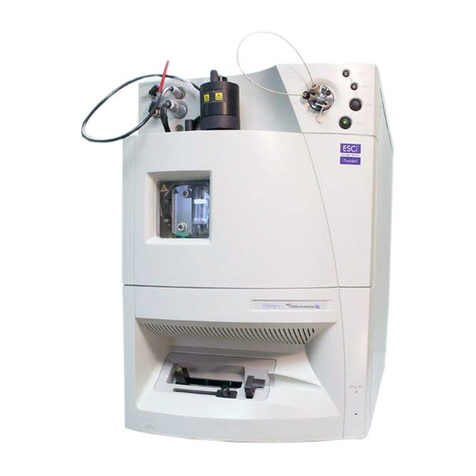
Waters
Waters Micromass ZQ 2000 Manual
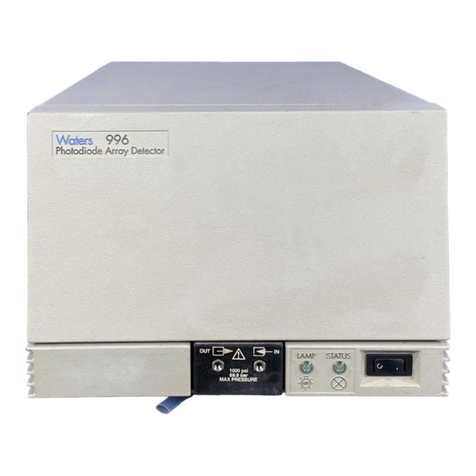
Waters
Waters 996 Manual
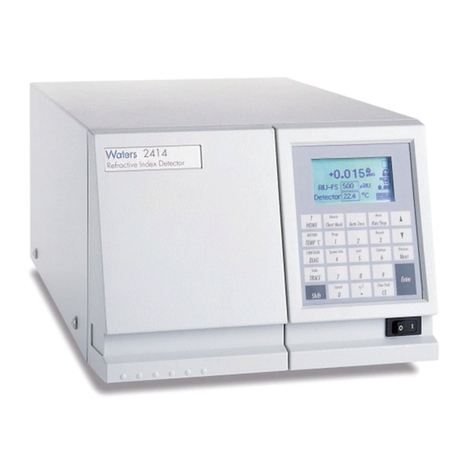
Waters
Waters 2414 Operating manual
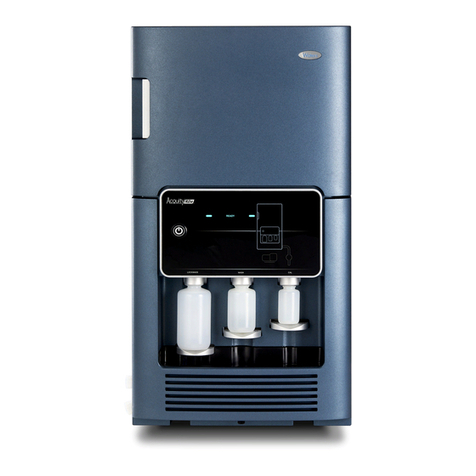
Waters
Waters ACQUITY RDa Operating manual

Waters
Waters 2475 Manual
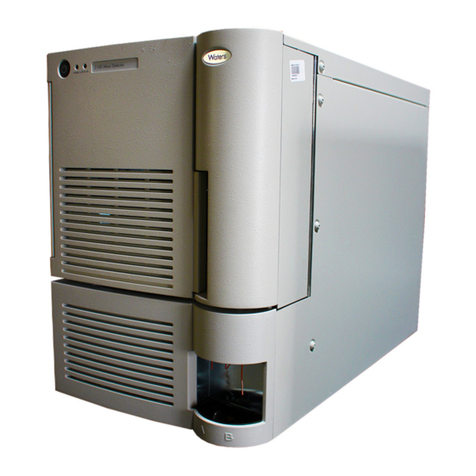
Waters
Waters 3100 Manual
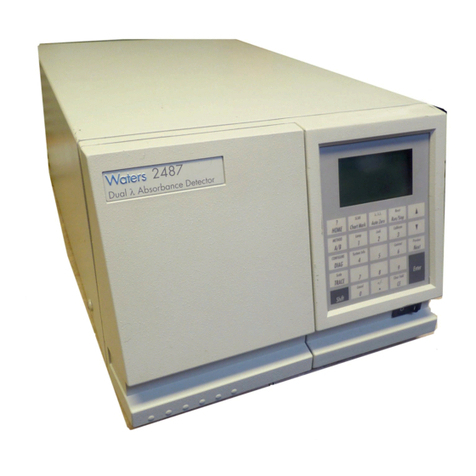
Waters
Waters 2487 User manual
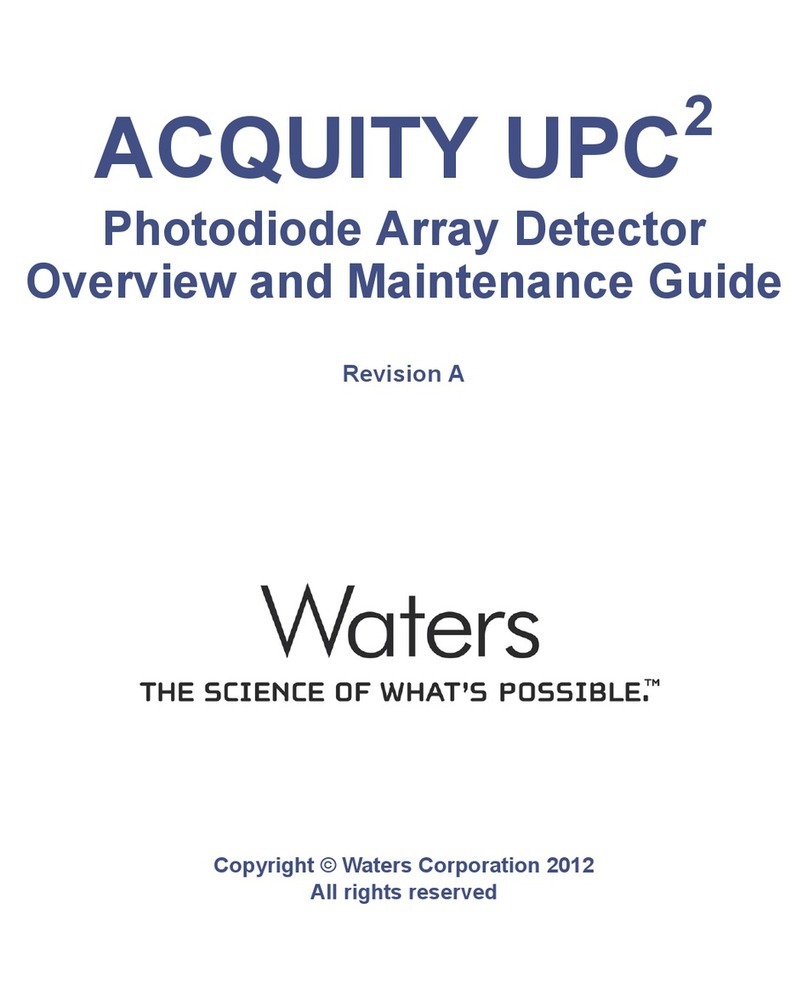
Waters
Waters ACQUITY UPC2 Operating manual
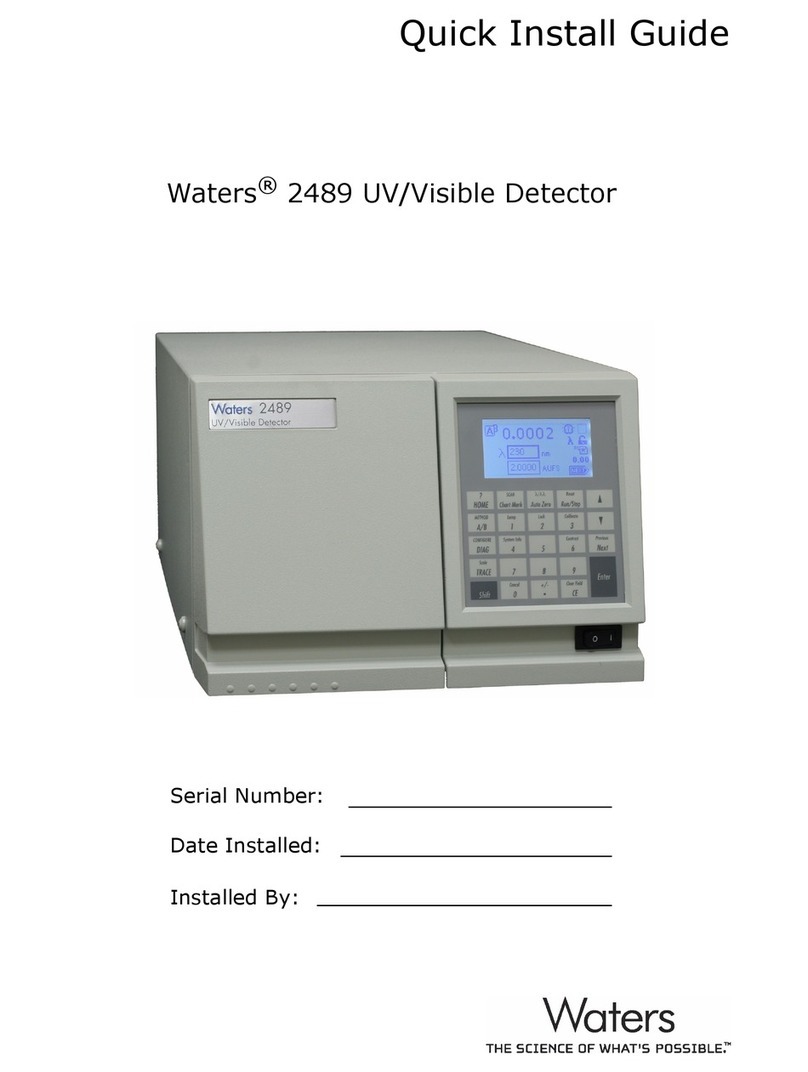
Waters
Waters 2489 User manual
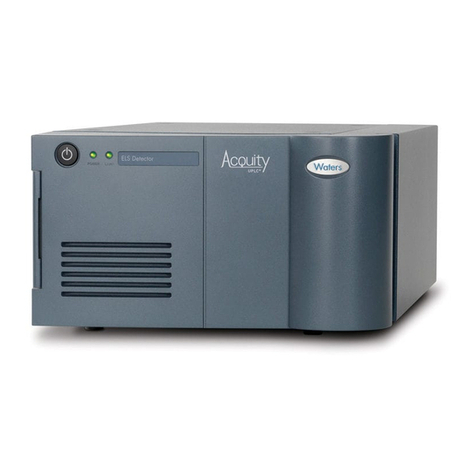
Waters
Waters ACQUITY ELS User manual
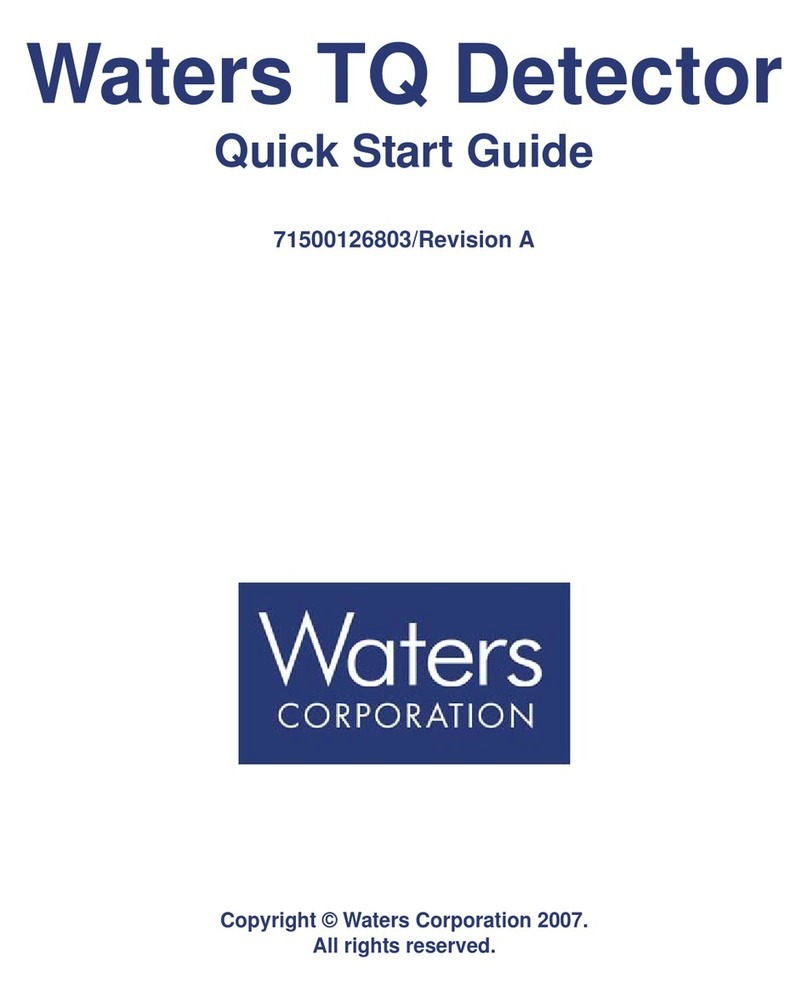
Waters
Waters TQ Detector User manual
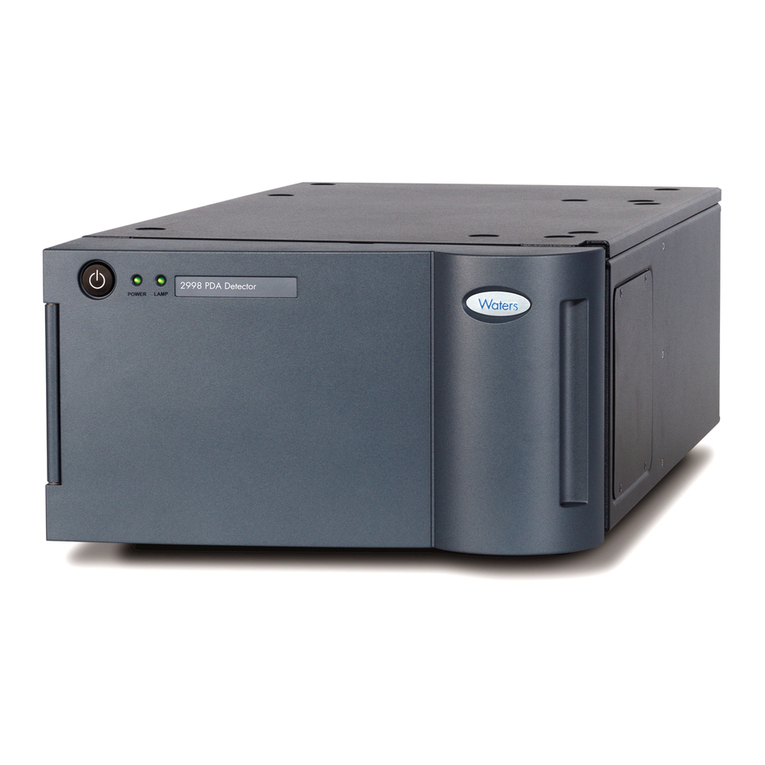
Waters
Waters 2998 Operating manual
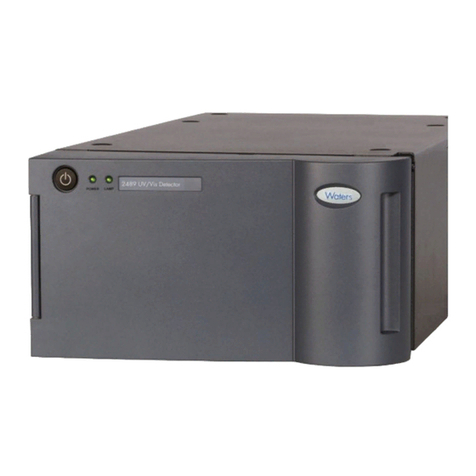
Waters
Waters 2489 Operating manual

Waters
Waters ACQUITY UPLC Operating manual

Waters
Waters 2489 Manual

Waters
Waters 2489 Manual

Waters
Waters 2998 Manual
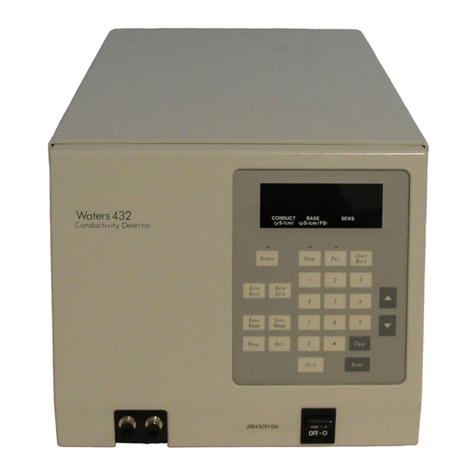
Waters
Waters 432 Manual
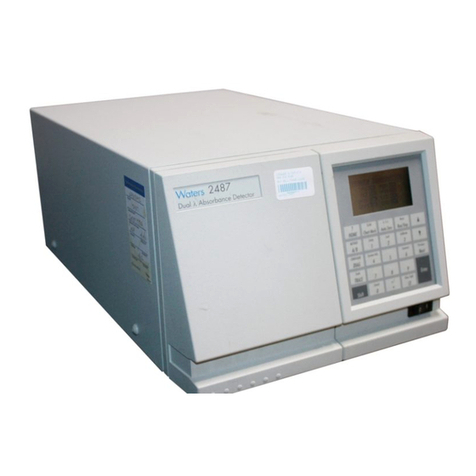
Waters
Waters 2487 Dual A Manual
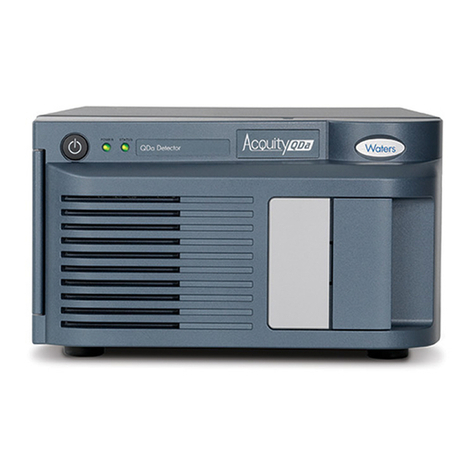
Waters
Waters ACQUITY QDa Operating manual
